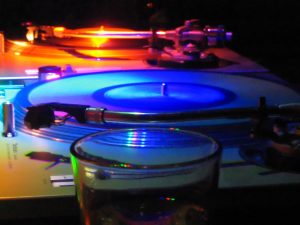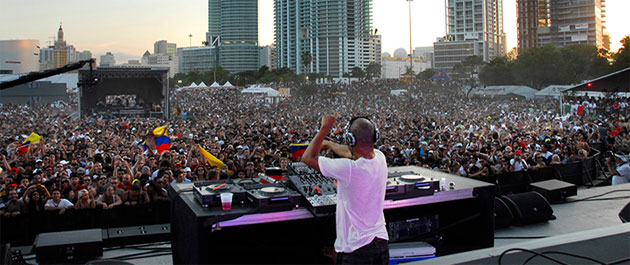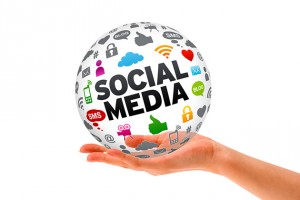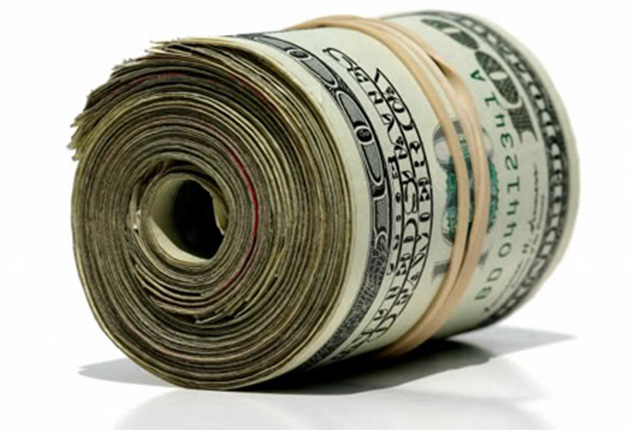On June 17, Eventbrite released results of a May 2013 survey examining the purchasing power and influences of EDM fans versus other-music fans, often in relation to social media. Harris Interactive Service Bureau questioned 1,019 U.S. adults in total about on and offline social behavior.
Because social media has played a greater role in EDM’s recent popularity in the United States, it’s inevitable that the survey’s results reflect this trend:
Attendance: 78 percent of EDM fans (versus 43 percent for other music) are more likely to attend a show if their friends are.
The Promoter: For close to 40 percent of EDM fans (versus 10 percent for other music), the promoter influences their decision to attend a show. 80 percent of EDM fans consider where the show or festival is being held, while 90 percent base a decision on who is performing.
 Vibe or Music?: Contrary to the 90 percent of EDM fans who go for the performer, 36 percent of EDM event attendees aren’t even fans of the genre but later go ahead to listen to it, while 28 percent claim to not like the music but go to the events anyway. Along these lines, 53 percent of EDM fans (versus 19 percent for other music) claim they would pay for a live stream concert.
Vibe or Music?: Contrary to the 90 percent of EDM fans who go for the performer, 36 percent of EDM event attendees aren’t even fans of the genre but later go ahead to listen to it, while 28 percent claim to not like the music but go to the events anyway. Along these lines, 53 percent of EDM fans (versus 19 percent for other music) claim they would pay for a live stream concert.
More social media usage: About two-thirds of people who attend EDM events heard about it through social media, with 73 percent seeing friends post about these events on social platforms. These figures contrast from other music fans’ 40 percent and 36 percent, respectively. Similarly, a large percentage of EDM fans share their experiences on social media: 67 percent before a performance, 41 percent during, and 63 percent after. In comparison, the figures for other music fans were 37, 21, and 51 percent, respectively.
Smartphone usage: In line with increased social media in purchasing decisions and sharing, EDM fans are more likely to use smartphones in relation to music: 71 percent listen to music on smart phones (versus 45 percent for other music fans), 52 percent purchase tickets with smart phones (12 percent for other music), and the average EDM fan takes 25 photos and five videos during a show (versus 17 and 2, respectively, for other music fans) with a smartphone. This explains why Vyclone decided to partner with Arty, instead of a pop or rock star who may have greater single and album sales.
Ticket Sales: Eventbrite points out that ticket sales increased four times in 2013, and adding to this trend, 61 percent of those surveyed plan to attend EDM events this year.
Is Bigger Better?: Closing out Eventbrite’s survey results, 44 percent on EDM fans say the genre is becoming too mainstream, while 46 percent find it too commercial.
What These Results Mean
In a nutshell, Eventbrite’s results show that social media plays a huge role in EDM fans’ decisions: In line with what we have mentioned on here, posts and announcements bring fans out to shows and result in more tickets being purchased. Posting before and after, additionally, lets others in on the experience and sort of “spreads the word” about the EDM phenomenon.
But what Eventbrite didn’t touch on is, the role of the DJ and producer in social media. Almost contrary to record sales, Clear Channel Media and Entertainment’s Tom Poleman pointed out in the Huffington Post, DJs have millions of followers on multiple social media platforms, and they tend to be more active online.
 As well, because of how electronic music is distributed, EDM artists post their latest tracks to social media in advance of an official release on Beatport or iTunes – almost making social media essential for being up-to-date on an artist’s latest songs. Online radio shows for individual artists have taken off, and following in this trend, as Poleman mentions, the first EDM-only station on iHeartRadio, Evolution, became its No. 1 digital-only station in its first week.
As well, because of how electronic music is distributed, EDM artists post their latest tracks to social media in advance of an official release on Beatport or iTunes – almost making social media essential for being up-to-date on an artist’s latest songs. Online radio shows for individual artists have taken off, and following in this trend, as Poleman mentions, the first EDM-only station on iHeartRadio, Evolution, became its No. 1 digital-only station in its first week.
But in considering purchasing power, you have to take into account quality and ticket prices. A recent Dubstep.com piece by Albert Berdellans pointed out that the genre’s quick and extreme growth isn’t sustainable: “EDM will be a victim of its own popularity.”
One of the glaring statistics – that close to 40 percent of all EDM fans take a promoter into account when making a purchasing decision – could be the genre’s downfall, Berdellans mentions. Specifically, fans don’t consider artistic quality – instead, name recognition draws fans out to shows and results in sales. “For the vast majority of people that don’t have time to properly research and stay up to date on the music, popularity and fame become their benchmarks for judging the worth of any given act,” Berdellans writes.
He goes onto describe this phenomenon in relation to social media in more detail. “
Berdellans makes another excellent point about the “EDM bubble”: Aside from name recognition, rather than artistry, influencing fans, exorbitant ticket prices – and that’s for pre-scalped tickets – make fans cautious: Specifically, if you’re paying close to $100 for a single show, you want to see someone familiar, and thus, lesser-known artists get left in the cold or, at best, end up as openers. Because higher ticket prices, as well, compose most EDM producers’ salaries, artists spend more time on the road and less in the studio; the result is ghost producing or lower quality singles. If you want a clear example, consider the lesser quality of Avicii’s post-“Levels” output and the fact the producer prodigy does roughly 300 DJing gigs per year.
 Is Social Media Truly Social?
Is Social Media Truly Social?
As much as social media is considered a driving force of EDM, usage of it tends to be less traditionally social. Yes, as Eventbrite points out, a post about a show influences others to purchase tickets, but at the event, which has taken on a more rock concert-like vibe over the past few years, fans continue to stay glued to their devices.
Jason Bentley, the moderator of this year’s EDM Biz Conference, pointed out this factor in an O.C. Weekly interview. Reminiscing about “old” rave culture, Bentley said, “I also miss the adventure because it felt like so much positive came from being social. Today they face the stage and hold their phone’s up because they are taking photos and videos.”
So, the fans go out and influence others to come, and while standing and facing Avicii or Tiesto to a similar set they performed the night before, after paying outrageous ticket prices, they post Twitter updates and take pictures. Essentially, this approach – and assumption that if you don’t post, it didn’t happen – is great for marketers and artists themselves. But for an actual interactive and social experience? You might as well call EDM and its fans the musical embodiment of narcissism: Isolated and operating in a social-media influenced vacuum yet extremely influential.





